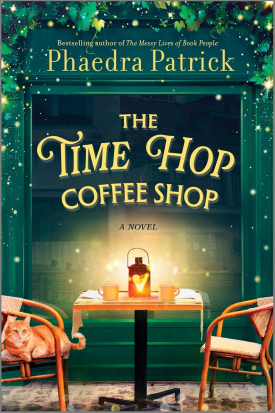Alan Paton Books In Order
Book links take you to Amazon. As an Amazon Associate I earn money from qualifying purchases.Publication Order of Standalone Novels
| Cry, the Beloved Country | (1948) | Description / Buy at Amazon |
| Too Late the Phalarope | (1953) | Description / Buy at Amazon |
| Debbie Go Home | (1961) | Description / Buy at Amazon |
| Hofmeyr | (1962) | Description / Buy at Amazon |
| Instrument of Thy Peace | (1969) | Description / Buy at Amazon |
| Ah But Your Land Is Beautiful | (1981) | Description / Buy at Amazon |
Publication Order of Collections
| Tales From a Troubled Land | (1961) | Description / Buy at Amazon |
| The Long View | (1968) | Description / Buy at Amazon |
| Knocking on the Door | (1975) | Description / Buy at Amazon |
| Save the Beloved Country | (1989) | Description / Buy at Amazon |
| Songs Of Africa: Collected Poems | (1995) | Description / Buy at Amazon |
| The Hero of Currie Road | (2008) | Description / Buy at Amazon |
Publication Order of Non-Fiction Books
| The Land And People Of South Africa | (1955) | Description / Buy at Amazon |
| South Africa And Her People | (1958) | Description / Buy at Amazon |
| Kontakion for You Departed | (1969) | Description / Buy at Amazon |
| Apartheid And The Archbishop | (1973) | Description / Buy at Amazon |
| Towards the Mountain | (1980) | Description / Buy at Amazon |
| Journey Continued: An Autobiography | (1990) | Description / Buy at Amazon |
| Lost City of the Kalahari | (2005) | Description / Buy at Amazon |
Publication Order of Plays Books
| Sponono | (1965) | Description / Buy at Amazon |
Publication Order of Anthologies
Alan Stewart Paton, a South African author and a fervent advocate against apartheid, left a lasting legacy with his notable literary contributions, which encompassed novels such as “Cry, the Beloved Country,” “Too Late the Phalarope,” and the narrative poem “The Wasteland.”
In an era characterized by racial oppression, Paton, a white individual in a nation dominated by the struggles of Black citizens, stood out as a rare figure who passionately championed their fight for freedom and upheld their intrinsic worth. His actions have often been likened to the symbolic act of uprooting barbed wire fences and replacing them with thriving geraniums in the South African landscape. As a chronicler of his times, Paton played a pivotal role in bridging the gap between America, the global community, and the complex issue of race relations in South Africa, prompting a profound and heartfelt engagement with this critical challenge.
Paton began writing his inaugural and arguably most renowned novel, “Cry, the Beloved Country,” in 1946 while residing in Trondheim, Norway. He successfully concluded the manuscript in San Francisco on Christmas Eve of the same year. Published in 1948, the book garnered diverse reactions from White South Africans, with some considering it revolutionary and others finding it sentimental. However, it succeeded tremendously, amassing a global readership of more than 15 million copies by 1988. Additionally, the novel inspired the creation of two film adaptations, one in 1951 and another in 1995, and is credited with raising awareness about apartheid internationally.
After completing “Cry, the Beloved Country,” Paton resigned from his position in Diepkloof and relocated to the KwaZulu Natal coast to fully devote himself to writing. During the period from 1948 to 1989, he exhibited prolific literary output, publishing a total of 19 books. Paton’s commitment to his craft persisted, even in the face of adversity. In 1960, upon returning from an award ceremony for the American Freedom Award, his passport was confiscated and only returned a decade later. In April 1988, Paton received the devastating diagnosis of inoperable throat cancer. Nevertheless, he continued to write until his passing on 12 April 1988 in Durban.
Cry, The Beloved Country” is a compelling portrayal of lives profoundly shaped by the grim specter of racial segregation. Set against the backdrop of 1948, a period that foreshadowed the full implementation of apartheid, the novel exposes the inner vulnerabilities of characters trapped in a relentless cycle of racial prejudice, marked by violence, suffering, and indifference. A few remarkable individuals exemplify courage and compassion daily amid this pervasive despair. Among them is Stephen Kumalo, a black Anglican priest from the indigenous Zulu tribe. Upon receiving distressing news of his sister’s illness, Stephen embarks on a poignant journey to Johannesburg. The narrative closely follows his path, chronicling the myriad trials he endured while tending to his ailing sister, incarcerated son, and politically tainted brother. At the heart of the story lies the trial of Stephen’s son, accused of murder, which captivates the nation’s attention, shedding light on the pressing issue of native crime. Despite his lineage being mired in poverty, corruption, and disgrace, Stephen’s silent grief encapsulates the book’s overarching theme—the unyielding pursuit of justice. “Cry, The Beloved Country” delves into the inner turmoil of a man grappling with the impending death of his son while silently bearing the weight of shame on his shoulders. The novel culminates with Stephen ascending the hills of Ndotsheni to mourn the loss of a cherished one.
This literary masterpiece, “Cry, The Beloved Country,” possesses the power to stir, soften, and evoke profound empathy for Kumalo. The author’s lyrical prose, delicately imbued with just the right sensitivity, presents varied perspectives and locales, earning the accolades it has garnered over more than seven decades. The book serves as an astute reflection of a psyche consumed by anxiety, sorrow, and hope that emanates from the wounds inflicted by racial segregation. The characters’ profound portrayal within the geopolitical backdrop of apartheid’s institutionalized discrimination contrasts the voices articulating the same truths from distinct vantage points. The novel maintains a well-paced narrative and is adorned with the linguistic richness of native South Africa, demonstrating both strategic and creative prowess in addressing its central inquiry.
However, it’s worth noting a peculiarity that captivates the reader throughout the book. For a mind hungry for passages that challenge apartheid with rational and reasoned arguments, passionate quotes drawn from the victim’s lifetime work, or courtroom dialogues that distill truth from perceptions amidst the vacuum of sociopolitical circumstances, Alan Paton allocates no more than ten pages in a book exceeding 300 pages. The vocal, intellectual, and objective arguments Jarvis Jr. presents are relegated to a secondary role, creating an aftereffect at best, while Kumalo’s muted and internalized grief resounds prominently. The author employs this deliberate juxtaposition to invite readers to contemplate why Jarvis Sr. appears more affected by the revelation of his son’s radical ideas than by the news of his death. It prompts reflection on why a book rooted in apartheid emphasizes loss more than the reasons behind it.
This conscious prioritization of human suffering over the need for practical arguments offers a pathway to understanding how human intellect evolves from the crucible of humanitarian conflicts. “Cry, the Beloved Country” connects the dots of a multifaceted conflict and explores how truth, although slow to crystallize, can metamorphose from an emotion into an ideology. Through this novel, Alan Paton establishes human dignity as the most potent and invaluable argument against apartheid, transcending any other rational or legal justification for discerning right from wrong. Ultimately, “Cry, the Beloved Country” demonstrates the power of the heart in shaping the mind.
Moreover, the impact of the book extends beyond its printed pages. It has been adapted into film twice (in 1951 and 1995) and served as the foundation for the Broadway musical “Lost in the Stars,” with adaptation by Maxwell Anderson and music by Kurt Weill. Alan Paton’s subsequent novels, including “Too Late the Phalarope” (1953) and “Ah, but Your Land Is Beautiful” (1981), along with his collection of short stories titled “Tales From a Troubled Land” (1961), all continue to explore the same racial themes that were central to his debut novel. “Ah, but Your Land Is Beautiful” stands out as a historical fiction work that weaves together parallel life stories, letters, speeches, news reports, and records from legal proceedings, blending fictional and real-life characters such as Donald Molteno, Albert Luthuli, and Hendrik Verwoerd. This novel offers an accurate account of the resistance movement in South Africa during the tumultuous 1960s.
Book Series In Order » Authors »


 Any issues with the book list you are seeing? Or is there an author or series we don’t have? Let me know!
Any issues with the book list you are seeing? Or is there an author or series we don’t have? Let me know!